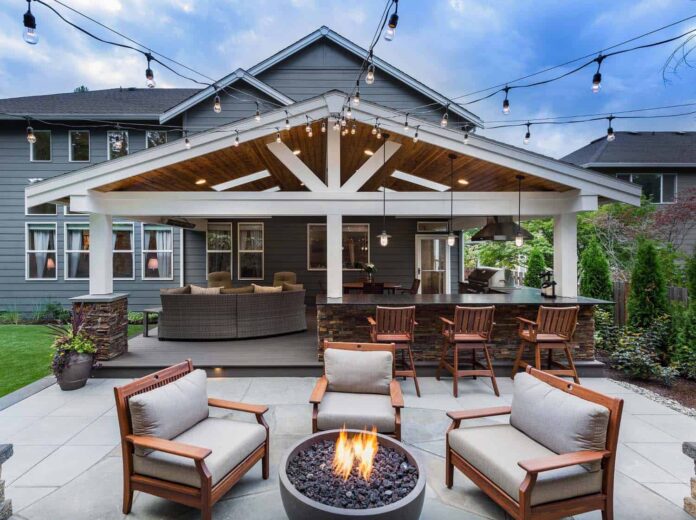
It is not always possible to make financial investments in building a house and landscaping at the same time. In a situation where you have to make a choice, priority is naturally given to a residential building. But this does not mean that the landscape should remain undeveloped. There are simple ways to originally decorate the territory of the site without a lot of money.
It is most convenient to draw up a site plan during a visual inspection. To do this, just go out into the courtyard, walk around the territory, and analyze its condition. The most illuminated and shady places, lowlands, and hills are taken into account. Inspection and identification of the features of the land allotment will help to divide it into the main zones: a garden, auxiliary buildings (garage, barn), a resting place, and other facilities necessary in a particular situation.
1. Plan depending on the illumination:
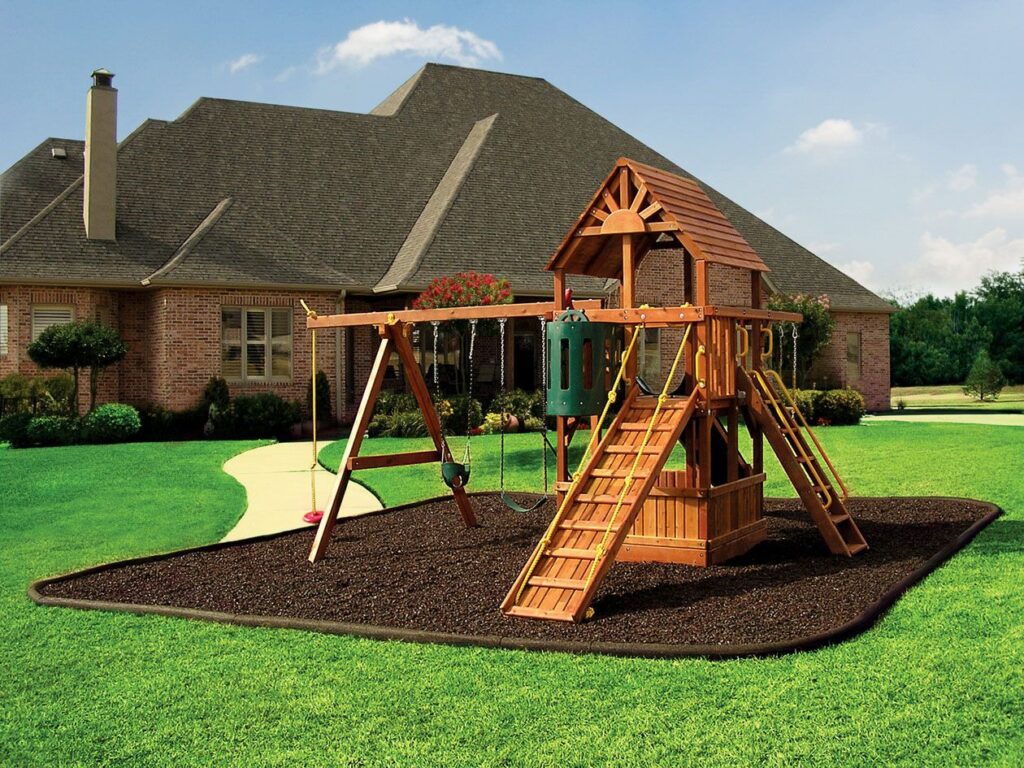
On the north side of tall trees and buildings, falls a shadow. Such areas are best reserved for a garage, utility room; A hedge of trees – protects the site from the wind.
Sunny areas should be allocated for the vegetable garden and flower garden since plants develop better in good light;
Places with diffused shade are ideal for organizing playgrounds and recreational areas in the daytime.
Most of the land allotted to the garden and the garden, and the rest of the territory, free from technical facilities, can be occupied by recreational areas, surrounded by flowerbeds and details of the decorative landscape.
2. Drawing up a work plan
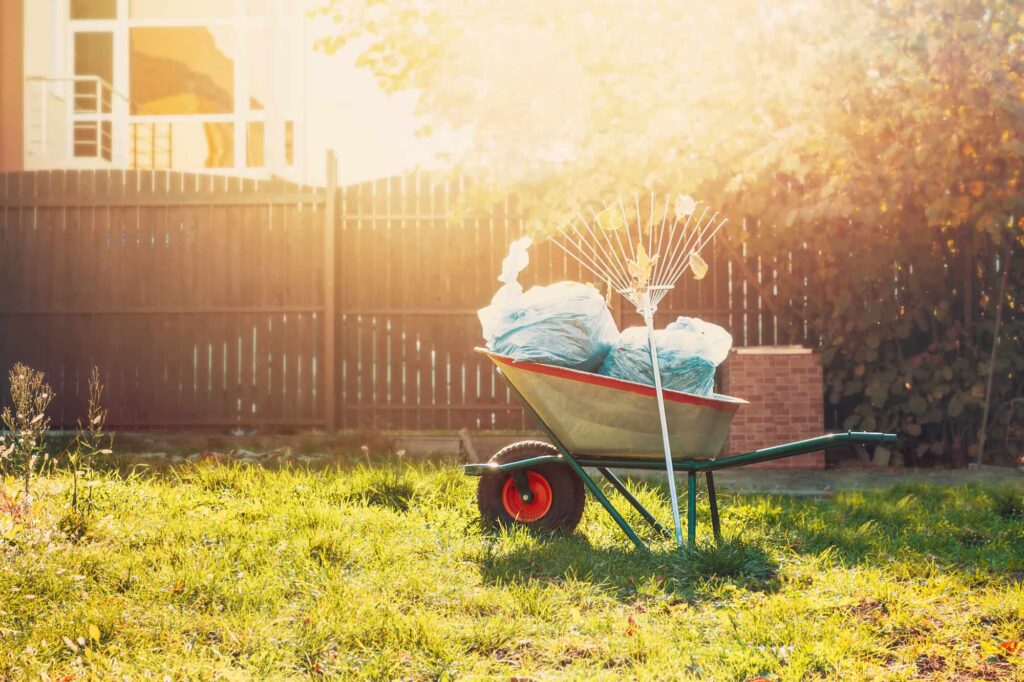
In order to have a clearer picture of the upcoming work, it is recommended to start by cleaning the area of garbage, dry grass, and weeds. Freed from unnecessary things, the site seems more spacious, and it is easier to draw a future landscape on it. Then you should act according to the plan, and not to rack your brains every time, what to do next, you just need to make a list of works in the order in which they should be performed.
Work plan:
- Alignment of irregularities, that means cutting off hillocks and moving excess of the earth to lowlands;
- Planting fruit and decorative trees, berry bushes;
- Construction of a garage and technical facilities;
- Construction of canopies or arbors in places of rest;
- Construction of raised flower beds and vegetable rows;
- Designation of borders between zones;
- Path laying;
- Distribution of the flower beds.
3. Resting place
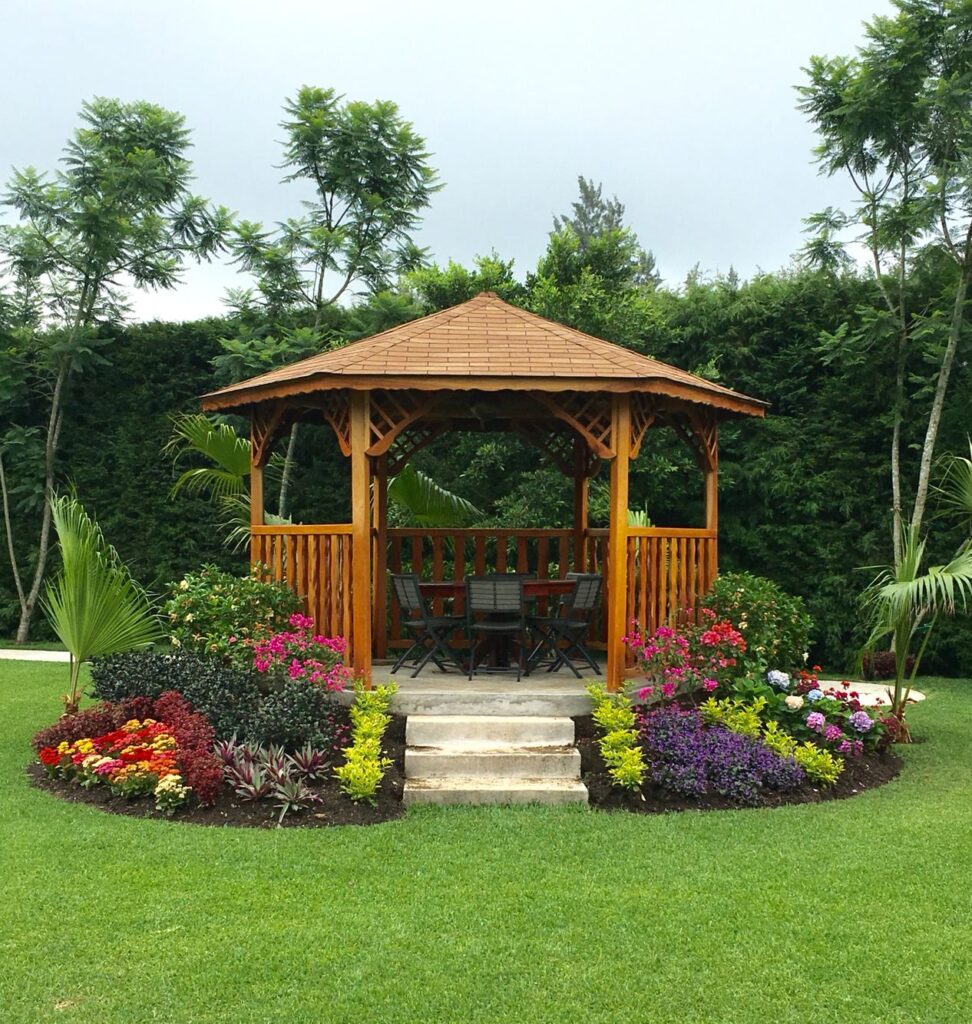
A rest zone is necessary in any case since you need to receive guests somewhere or gather in a narrow family circle. If in the near future, it is not planned to build a capital gazebo, you can make it with canopies and home-made pergolas. Some decking can be a good solution for the resting area, but it is better to be performed by the professionals.
The easiest way to attach a canopy to the house:
For construction, you will need two pipes and metal cross-pieces (corner, square, reinforcement with a cross-section of 15 mm, strip). The length of the crossbars depends on the size of the canopy.
How to make a canopy:
- Having retreated from the wall of the house about 2 m, pipes are dug in, which will serve as supports. Their height should be 20 cm below the roof so that there is a free flow of rainwater;
- The upper corners of the supports are connected to the house by transverse beams, the opposite ends of which are brought under the roof;
- A crate of reinforcement is welded on the crossbars;
- The roof is laid from slate, are arranged plums.
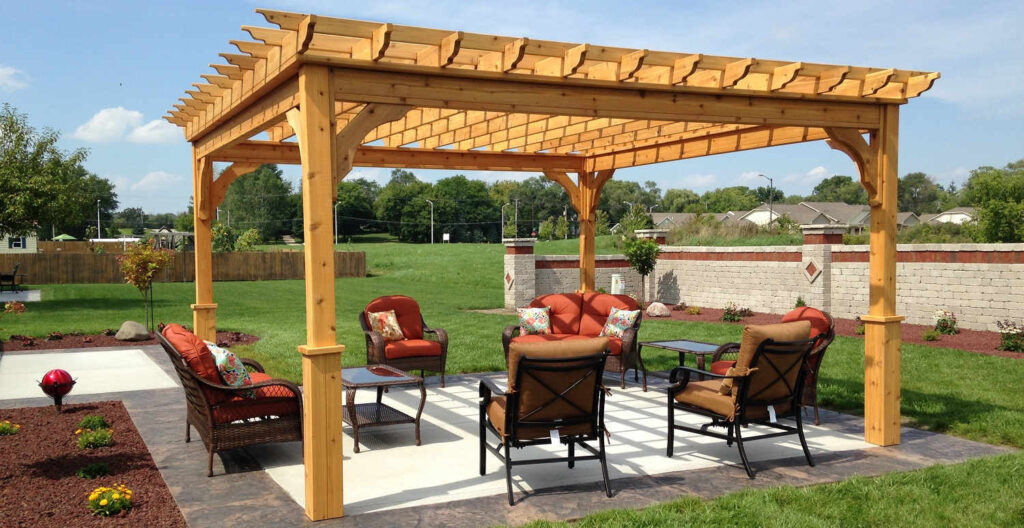
In a similar way, it is not difficult to make a wooden block canopy.
The lateral sides, in this case, are decorated with gratings and are launched climbing plants. The interior is furnished with inexpensive plastic furniture or stationary benches and a wooden table. If the house has old sofas and armchairs that are not a pity to put out on the street, they are very suitable for decorating a relaxation zone.
It is best to attach a canopy to the house in the backyard near the windowless wall. Here you can create a cozy hidden place by decorating it with thin curtains and hanging flowerpots. Nearby you can put a barbecue or make a hearth for a barbecue.
4. Design of the garden
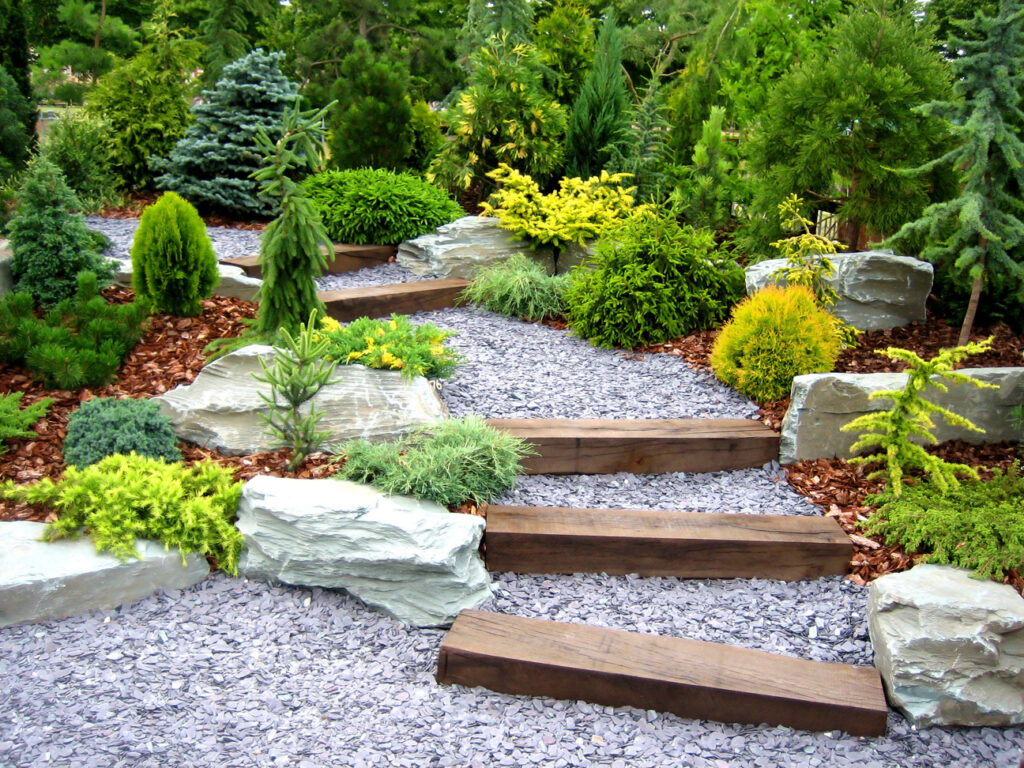
Vegetables “participate” in creating a stylish landscape along with flowers. Sometimes they are even able to compete with them in decorativeness and assume the role of a dominant plant in the design of the site.
Creating a beautiful garden, 7 useful tips:
- Each row is clearly limited. This gives the garden a more well-groomed appearance and helps in planning plantings. The borders are paths of various widths;
- If the soil on the site needs improvement, high rows are an excellent way out. It is not necessary to raise the entire area of the garden – only the most problematic areas;
- Raised rows should be made so wide that they are easy to work with while you are standing on the path. The length can be any;
- Tall plants are planted so that they do not shade low plants;
- In a small area, tomatoes, herbs, cabbage, and other vegetables can peacefully coexist with flowers in the flowerbed: both beautifully and practically;
- Plants requiring the most frequent watering are located closer to the source of water;
- In garden design, the principle of combining plants is applied. The garden looks more interesting when different plants are grown on the same row: cabbage with onions, cucumbers with zucchini, greens with carrots.
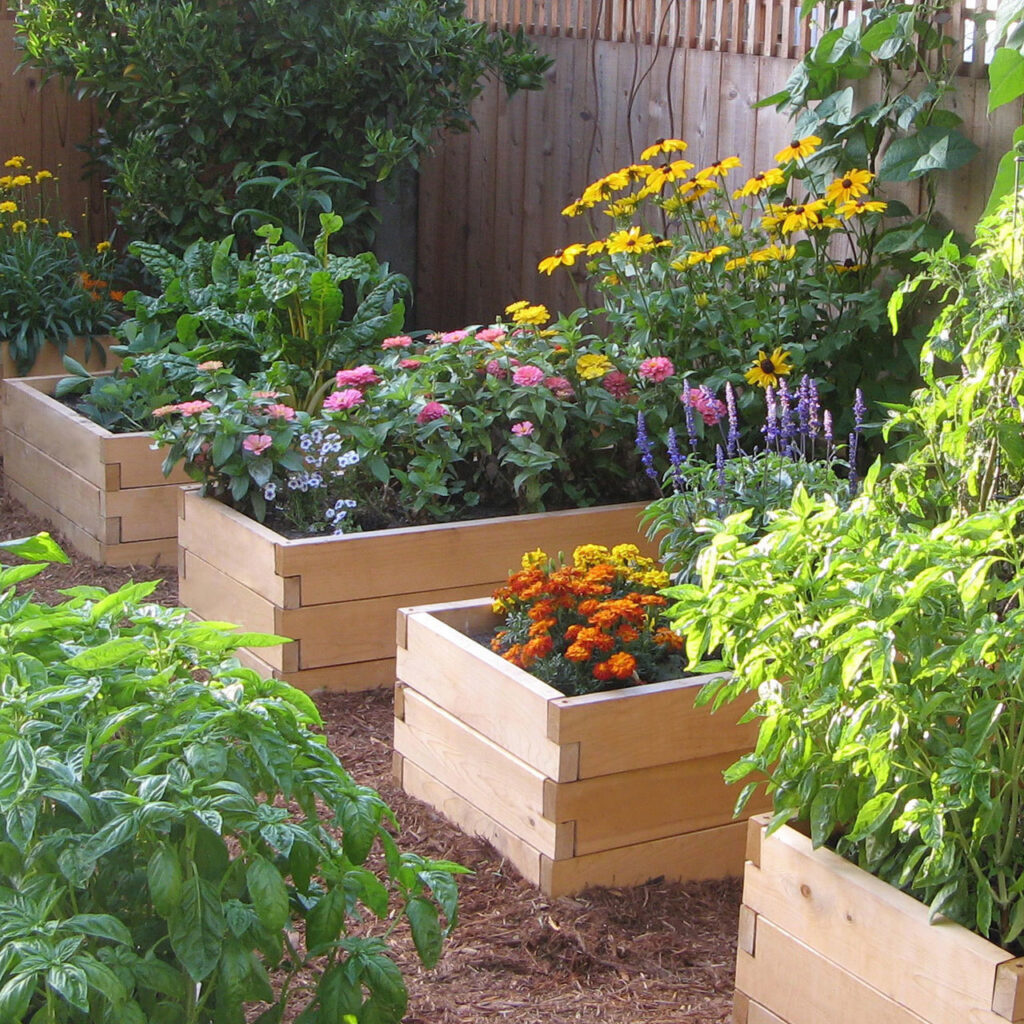
Some vegetables are decorative on their own so that they can be used even in ceremonial flower rows. Looks beautifully surrounded by annual flowers blue cabbage, bell peppers, decorative varieties of tomatoes. Very spectacular are red lanterns of physalis, spreading leaves of rhubarb or curly rosette of lettuce.
By introducing new into the landscape design of the outdoor space every year, you can create interesting compositions without a lot of money. The main thing is not to be afraid to experiment, to be able to find a use for old things, to seek fresh ideas for designing.








